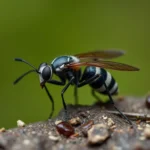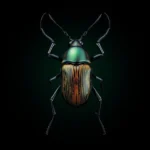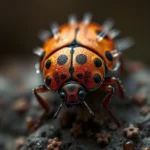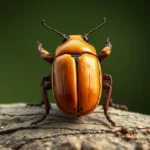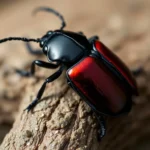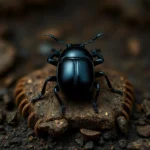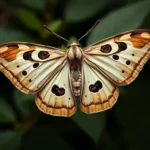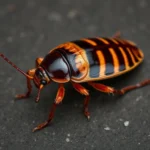The Oleander Hawk Moth: A Symbol of Transformation and Resilience

Disclaimer: Some images on this website are AI-generated artworks and may not accurately represent real animals.
The oleander hawk moth, scientifically known as Daphnis nerii, is not just an insect; it embodies profound symbolism and meaning that resonates deeply with themes of transformation, resilience, and connection to nature. This blog post delves into the fascinating world of the oleander hawk moth, exploring its physical characteristics, lifecycle, and the rich symbolism associated with it, particularly in dreams and modern culture.
Understanding the Oleander Hawk Moth
Physical Characteristics
The oleander hawk moth is a striking insect, easily recognizable due to its vibrant colors and patterns. The following table provides a detailed overview of its physical characteristics:
| Feature | Description |
|---|---|
| Size | Wingspan of 3 to 4 inches (7.5 to 10 cm) |
| Color | Greenish-brown with pink and gray patterns |
| Body | Stout and robust with a long, pointed tail |
| Wings | Forewings are narrow; hindwings are wider |
| Caterpillar | Bright green with yellow stripes |
The lifecycle of the oleander hawk moth is equally captivating. It undergoes four distinct stages: egg, larva (caterpillar), pupa, and adult. The eggs are laid on oleander plants, from which vibrant green caterpillars emerge. These larvae feed voraciously on the plant’s leaves before entering the pupal stage, where they undergo metamorphosis, ultimately emerging as beautiful adult moths.
Habitat and Distribution
The oleander hawk moth predominantly inhabits warm regions, thriving in subtropical and tropical climates. Its geographical range spans across Europe, Africa, and parts of Asia. This moth exhibits remarkable adaptability to its environment, often found in gardens, urban areas, and natural landscapes where oleander plants flourish.
The adaptation of the oleander hawk moth to its habitat is noteworthy. Its diet primarily consists of oleander flowers, but it is also known to feed on various other flowering plants. This dietary flexibility allows it to survive in diverse environments, reinforcing its symbolism of resilience and survival.
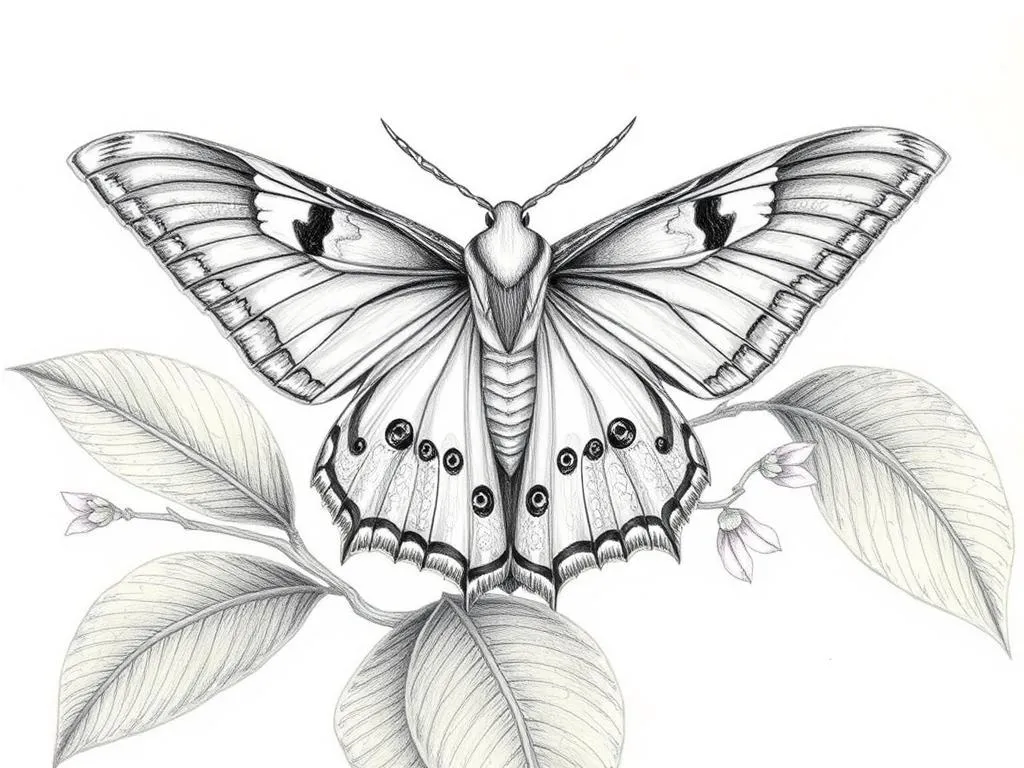
Symbolism & Spiritual Meaning
Transformation and Change
The oleander hawk moth is often viewed as a powerful symbol of transformation. Its dramatic metamorphosis from a caterpillar to a magnificent moth parallels the journey of personal growth and change that many individuals experience throughout their lives. This transformation embodies the idea of embracing change, shedding old habits, and emerging stronger and more beautiful than before.
In many cultures, the appearance of moths signifies the beginning of a new chapter or phase in life. The oleander hawk moth encourages individuals to welcome change rather than fear it, reminding us that growth often comes from stepping outside our comfort zones and facing challenges head-on.
Resilience and Survival
Another significant aspect of the oleander hawk moth’s symbolism is its representation of resilience. These moths thrive in challenging environments, demonstrating an incredible ability to adapt and survive. In a world that often tests our limits, the oleander hawk moth serves as a reminder of the importance of perseverance through adversity.
The survival of the oleander hawk moth, despite the threats posed by predators and environmental changes, symbolizes the strength of the human spirit. It encourages us to cultivate resilience, reminding us that setbacks can be overcome and that we can emerge from difficult situations with newfound strength.
Connection to Nature
The ecological role of the oleander hawk moth as a pollinator further enhances its symbolism. By facilitating the reproduction of various flowering plants, these moths contribute to the balance and harmony of ecosystems. The oleander hawk moth embodies the interconnectedness of life and the vital role each creature plays in the natural world.
This connection to nature serves as a reminder of the importance of living in harmony with our environment. The oleander hawk moth encourages mindfulness and appreciation for the beauty of nature, urging us to recognize the delicate balance that sustains life on Earth.
Oleander Hawk Moth in Dreams
Common Dream Themes
The presence of the oleander hawk moth in dreams often carries significant meanings. Dreaming of this moth may evoke the following themes:
- Transformation and New Beginnings: The appearance of the oleander hawk moth may signify a period of change or the initiation of new journeys. It encourages individuals to embrace their personal evolution.
- Embracing One’s True Self: Dreams involving this moth often signal a call to authenticity, urging dreamers to connect with their true selves and pursue their passions.
Interpreting the Presence of the Moth
When interpreting the presence of the oleander hawk moth in dreams, consider the following potential messages:
| Interpretation | Meaning |
|---|---|
| Transformation | Indicates significant changes are on the horizon |
| Personal Growth | Suggests a journey toward self-discovery |
| Resilience | Encourages perseverance in the face of adversity |
| Connection to Nature | Reminds of the importance of harmony and balance |
These interpretations highlight the oleander hawk moth as a messenger of hope, change, and personal growth. Dreams featuring this moth can serve as reminders to embrace life’s transitions and trust in one’s ability to navigate challenges.
Modern Interpretations
Cultural Significance
Throughout history, moths have held various meanings in folklore and mythology. In many cultures, they are seen as symbols of intuition, change, and transformation. The oleander hawk moth, in particular, is often associated with themes of rebirth and renewal due to its transformative lifecycle.
The oleander plant, which serves as a primary food source for this moth, also carries its symbolism. Known for its striking beauty yet toxic nature, the oleander plant represents the duality of existence—beauty intertwined with danger. This connection further enhances the oleander hawk moth’s symbolism of navigating life’s complexities.
Art and Literature
The oleander hawk moth has found its way into various artistic forms, inspiring paintings, poetry, and literature. Artists often depict this moth to symbolize the beauty of transformation and the fleeting nature of life. Its striking appearance makes it a popular subject in visual arts, while its deep symbolism resonates in literary themes exploring personal growth and resilience.
In contemporary literature, the oleander hawk moth serves as a metaphor for characters undergoing significant transformations or grappling with their identities. Its presence often signifies a turning point in the narrative, reflecting the broader themes of change and self-discovery.
Key Takeaways
Understanding the oleander hawk moth provides valuable insights into its rich symbolism and meaning. Here are key takeaways to consider:
- The oleander hawk moth symbolizes transformation and personal growth, encouraging individuals to embrace change.
- It represents resilience and the ability to thrive in challenging environments, inspiring perseverance through adversity.
- The moth serves as a reminder of our connection to nature, highlighting the importance of harmony and balance in ecosystems.
- Its presence in dreams often signals significant changes, urging individuals to embrace their authentic selves and trust in their journey.
- Culturally, the oleander hawk moth and its associated plant embody the duality of beauty and danger, reflecting life’s complexities.
Conclusion
The oleander hawk moth is more than just an insect; it is a powerful symbol of transformation, resilience, and connection to nature. Embracing the lessons imparted by this remarkable creature encourages us to reflect on our personal journeys and the changes we navigate throughout our lives. By recognizing and appreciating the symbolism of the oleander hawk moth, we can foster a deeper connection with nature and ourselves, ultimately leading to greater personal and spiritual growth.
